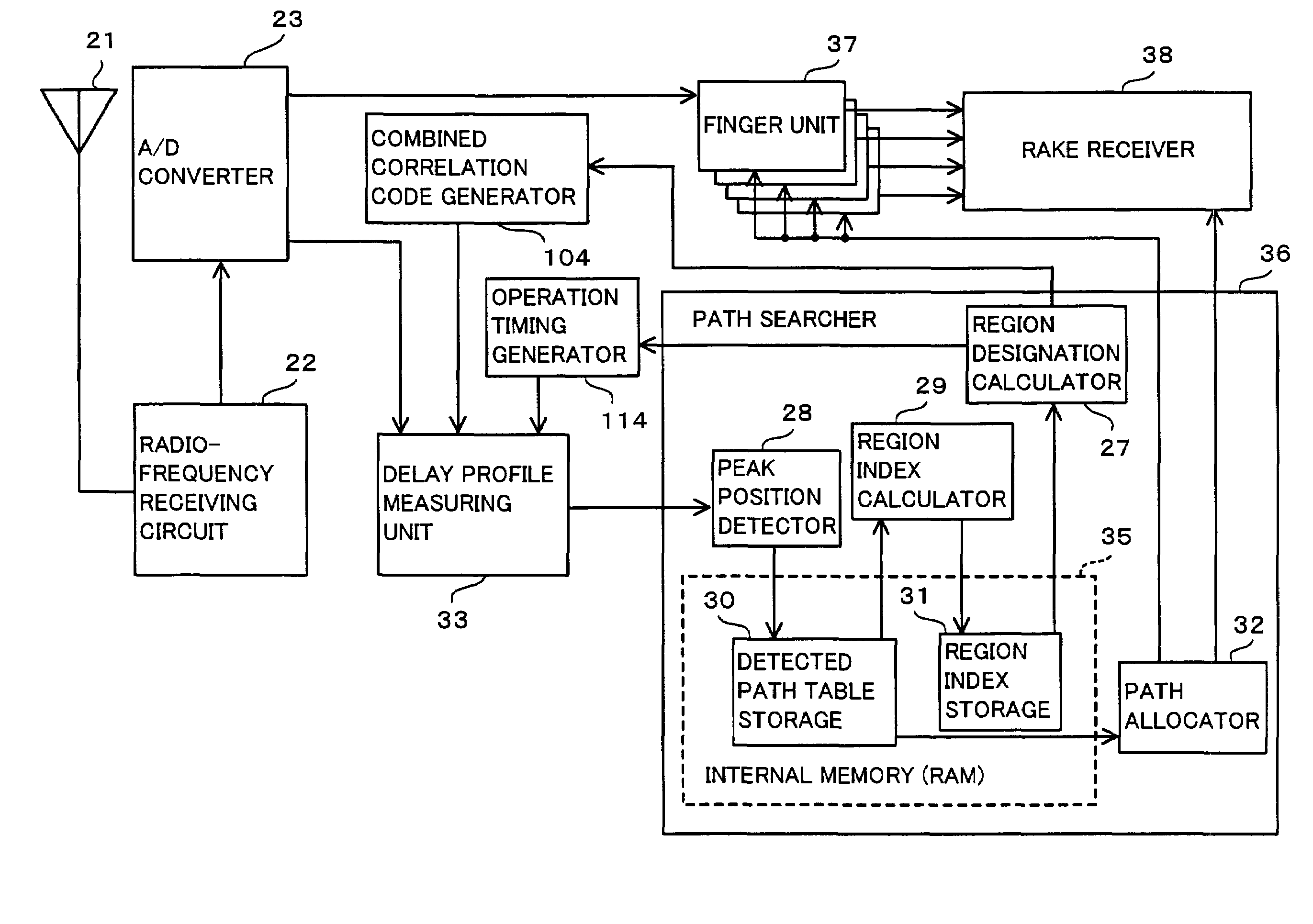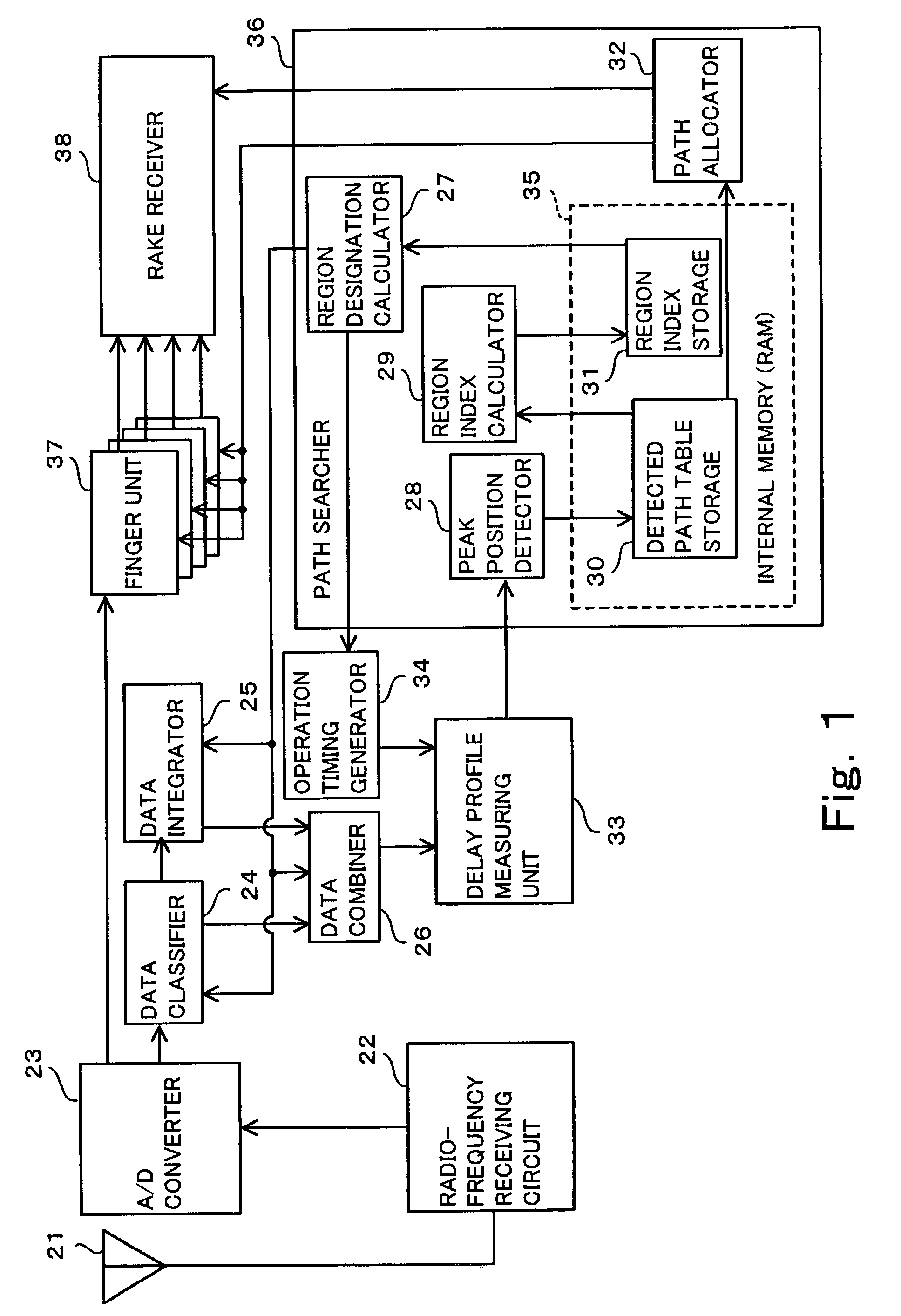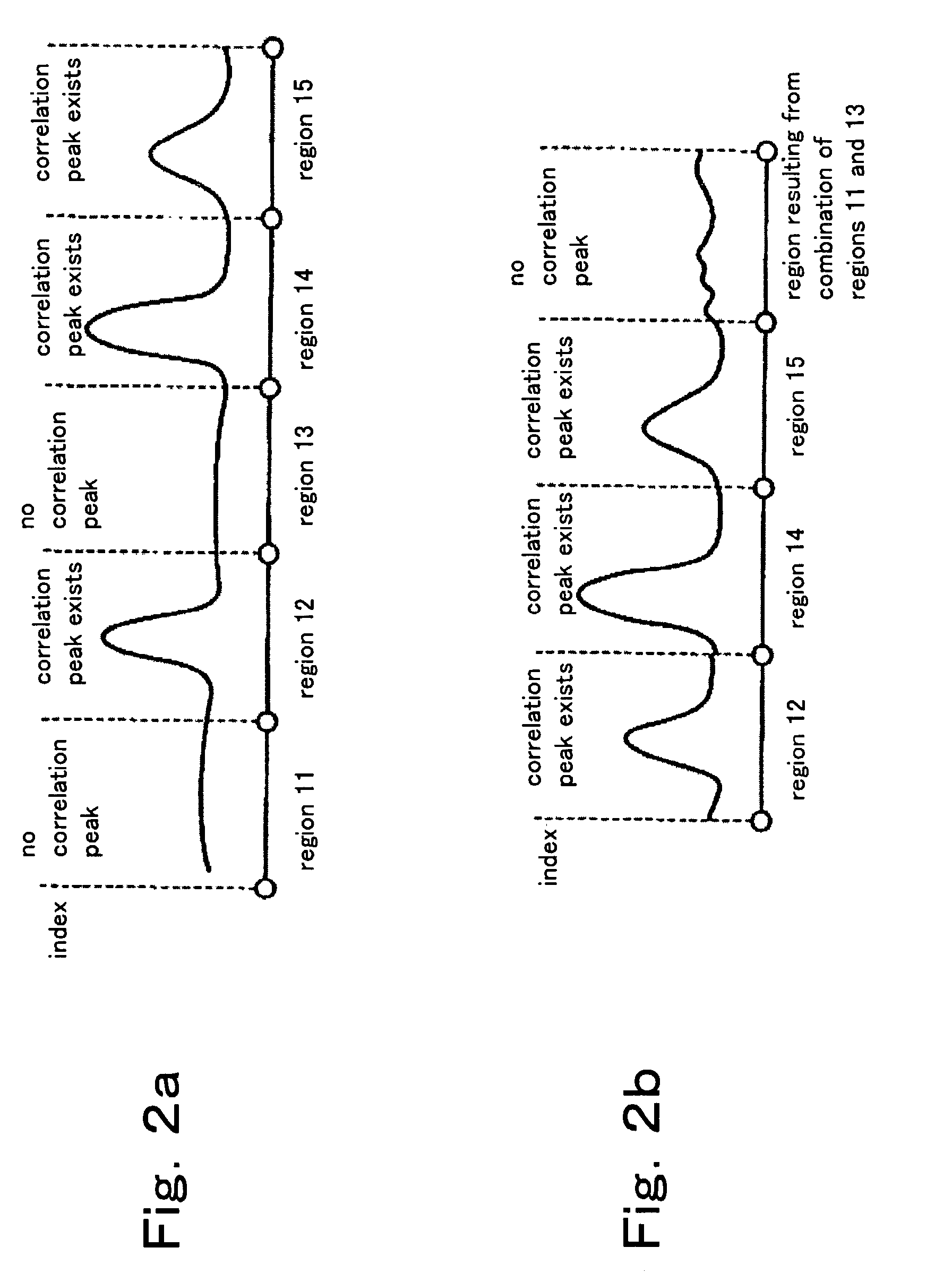CDMA receiver, path search method and program
a receiver and path technology, applied in the field of cdma receivers, can solve the problems of high power consumption, variation in the delay associated with the path to be rake combined, and also changes in the delay profile of the path, so as to achieve a small amount of calculation and power consumption
- Summary
- Abstract
- Description
- Claims
- Application Information
AI Technical Summary
Benefits of technology
Problems solved by technology
Method used
Image
Examples
first embodiment
[0036]The functional block that calculates the delay profile generally has to cope with a large amount of computation and high power consumption. However, when there is little change in the paths and correlation peaks, it is assumed that a region in which there is no significant path will not have a path in the following sampling period either. Accordingly, the CDMA receiver of this first embodiment splits the delay profile measurement range into a plurality of regions and, before calculating the delay profile, integrates the plurality of regions in which a path (i.e., a correlation peak) was not present in the previous sampling period. This reduces the amount of computation required to calculate the delay profile, thereby decreasing the amount of processing and the power consumption.
[0037]FIG. 1 gives a block diagram showing the constitution of the CDMA receiver according to this first embodiment of the invention. As shown in FIG. 1, a CDMA receiver according to this first embodime...
second embodiment
[0072]FIG. 6 gives an example of correlation codes generated by combined correlation code generator 104 shown in FIG. 5. In the example given in FIG. 6, correlations would be calculated by taking the inner product of the data sequence and the code sequence C(j), C(j+1), . . . , C(n−1), C(n) for computing the correlation. Because this correlation code sequence is obtained by calculation, the value of data C(j−1) prior to the code sequence for computing the correlation, and the value of subsequent data C(n+1), can both be obtained by calculation. It is also possible to compute the correlation in any region using the same correlation code sequence. In this second embodiment, when region 11 and region 13 are to be combined, if a version of the correlation code that has been shifted by the delay difference between region 11 and region 13, i.e., a version of the correlation code shifted by delay difference i (see FIG. 6), is added to the original code sequence for computing the correlatio...
PUM
 Login to View More
Login to View More Abstract
Description
Claims
Application Information
 Login to View More
Login to View More - R&D
- Intellectual Property
- Life Sciences
- Materials
- Tech Scout
- Unparalleled Data Quality
- Higher Quality Content
- 60% Fewer Hallucinations
Browse by: Latest US Patents, China's latest patents, Technical Efficacy Thesaurus, Application Domain, Technology Topic, Popular Technical Reports.
© 2025 PatSnap. All rights reserved.Legal|Privacy policy|Modern Slavery Act Transparency Statement|Sitemap|About US| Contact US: help@patsnap.com



